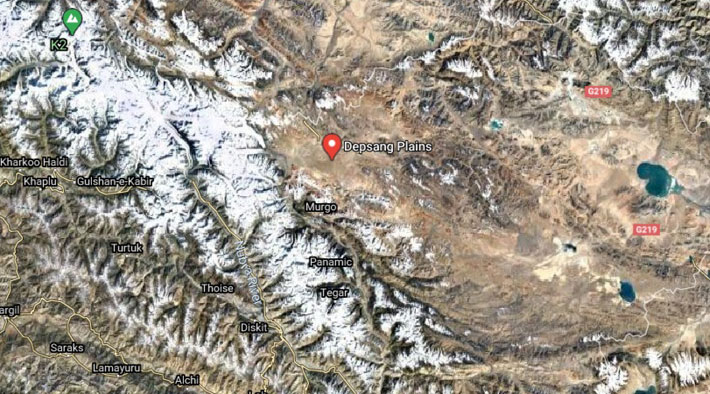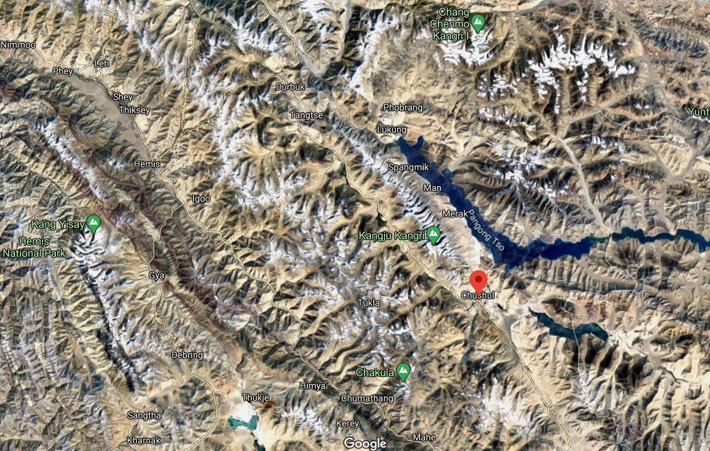INDIAN ARMED FORCES CHIEFS ON OUR RELENTLESS AND FOCUSED PUBLISHING EFFORTS

The insightful articles, inspiring narrations and analytical perspectives presented by the Editorial Team, establish an alluring connect with the reader. My compliments and best wishes to SP Guide Publications.

"Over the past 60 years, the growth of SP Guide Publications has mirrored the rising stature of Indian Navy. Its well-researched and informative magazines on Defence and Aerospace sector have served to shape an educated opinion of our military personnel, policy makers and the public alike. I wish SP's Publication team continued success, fair winds and following seas in all future endeavour!"

Since, its inception in 1964, SP Guide Publications has consistently demonstrated commitment to high-quality journalism in the aerospace and defence sectors, earning a well-deserved reputation as Asia's largest media house in this domain. I wish SP Guide Publications continued success in its pursuit of excellence.
- Prime Minister Modi Visits Punjab’s Adampur Air Base, Interacts with Airmen after Successful ‘Operation Sindoor’; Stern Message to Pakistan
- The layered Air Defence systems that worked superbly, the key element of Operation Sindoor
- Operation Sindoor | Day 2 DGMOs Briefing
- Operation Sindoor: Resolute yet Restrained
- India's Operation Sindoor Sends a Clear Message to Terror and the World – ‘ZERO TOLERANCE’
- Japan and India set forth a defence cooperation consultancy framework, talks on tank and jet engines
The Depsang Tangle
 |
The Author is Former Director General of Information Systems and A Special Forces Veteran, Indian Army |

Rajya Sabha Member of Parliament Subramanian Swamy created quite a flutter on Twitter with his tweet on November 15 that read: “I asked a national security officer how could the Chinese PLA build such an extensive infrastructure in such short period in Depsang. His answer: Depsang infrastructure was built from 2005 to 2012. UPA kept silent but so did the BJP Government from 2014 onwards. Need to check”. Swamy is known for his characteristic style of making surprising disclosures. But this tweet is more than sensational coming in backdrop of media reports that India and China have broadly agreed on a three-step process for disengagement: remove temporary structures and PLA deployments between Finger 4 and Finger 8 north of Pangong Lake which both sides cannot patrol thereafter; pull back tanks and artillery from faceoff to depth areas, and; after these two steps hold discussion for India to withdraw from Kailash Range and heights in Chushul area occupied on night August 29-30. Media made no mention of Depsang. Identity of the “national security officer” quoted by Swamy will remain unknown but his accusations against both Congress and BJP need closer examination including which PLA infrastructure he is referring to; Chinese side of the Line of Actual Control (LAC) or in area of Y-Junction on Raki Nala in Depsang Plains deep inside Indian Territory?
In 2013, PLA intruded 19 km in area of Raki Nala, staying on during the visit of Chinese Prime Minister Li Keqiang. Replying to a question in Parliament Union Home Minister Sushil Kumar Shinde admitted the intrusion saying, “We don’t have any jurisdiction in the area” – meaning there is no civil administration there. PLA withdrew the intrusion after three weeks but only after India succumbed to PLA demand for dismantling surveillance equipment and structures at Chumar – 400 km south of the intrusion. During the PLA intrusion, ITBP could not undertake patrols to Patrolling Point (PP) 10, PP 11, PP 11A, PP 12 and PP13. These PPs, designated by the China Study Group denote the self-imposed Limit of Patrolling (LOP) which is much short of the Line of Actual Control (LAC).
In April 2015, an article in South Asia Analysis Group reported PLA intruding in Burtse and Depsang during March 20-28, 2015 and withdrawing on being challenged by India troops. These intrusions occurred despite the joint India-China statement issued during visit of President Xi Jinping’s in September 2014 that laid stress on border tranquility. The article further mentioned India saying that Chinese are undertaking “transgressions” thereby implying they cross the border only to retreat, but admit at the same time that “intrusions” are occurring. Semantics help to confuse the issue and avoid explanations! On March 8, 2015, Chinese Foreign Minister Wang Yi stated that the Sino-Indian border dispute “has been contained. At the moment, the boundary negotiations are in the process of building up small positive developments. It is like climbing a mountain and the going is tough because we are on the way up”.

In late June 2020, media reports indicated that PLA had again intruded into the area of Y-Junction on Raki Nala in Depsang Plains deep inside Indian Territory, even though India was denying PLA intrusions elsewhere that had occurred in Galwan, Gogra-Hot Springs area and along north bank of Pangong Lake. More reports indicated that the Y-Junction intrusion was in very large numbers and ITBP can no more patrol PP10, 11, 11A, 12, 13 and even 14. This state continues even today. If PLA is on their side of the LAC and Indian troops are deployed in large numbers since mobilisation, as is being reported in some news reports, why did the ITBP patrols stop going to the PPs which are well short of the LAC? Or are we resigned to a more than 20 km deep buffer zone in Depsang in our own territory?
With regard to the tweet above, many ambiguities and questions emerge. PLA would have constructed temporary structures in Y-Junction during their three-week stay in 2013 – did they dismantle them? This notwithstanding, why did the Congress and BJP governments not establish permanent ITBP base at Y-Junction knowing this is a bottleneck to reach the PPs which are well short of the LAC? Obviously, the Ministry of Home Affairs (MHA) had no idea of the ground situation and cared little – all this while the ITBP is still not under command the Army. The ITBP base at Daulat Beg Oldi (DBO) is west of the Darbuk-Shyok-DBO Road, not to the east to guard against PLA intrusions, despite this being pointed out by Leh-based Corps Commanders when the DSDBO Road alignment was finalised.
Coming to the cover up about PLA infrastructure by both Congress and BJP, the ‘national security officer’ referred by Swamy is possibly referring to Chinese build up on the Chinese side of LAC. What caused the BJP government to keep quiet about it is not known but it certainly contributed to the surprise Chinese aggression in May-June this year. On the other hand, if the national security officer is referring to PLA structures at Y-Junction in Depsang Plains (which according to some reports are considerable) then the issue is more serious. Given the Chinese pace of developing infrastructure, four months plus is more than enough to create elaborate infrastructure.
The Ministry of External Affairs has stated that India and China have agreed to maintain dialogue and communication to resolve the Ladakh standoff, without commenting on media reports that the two sides are working on a plan to pull back troops and weapons from friction points. But Depsang is certainly a tangle for which the government would do well to show some transparency. Using scribes to obfuscate the issue shows the government in poor light though some journalists are more than eager to spin appeasing yarns. In fact, government should take a leaf from the Vajpayee era when there was complete transparency during the Kargil Conflict. As to withdrawing from Kailash Range, a former Army Commander has very aptly equated it to the strategic blunder of returning Haji Pir.





